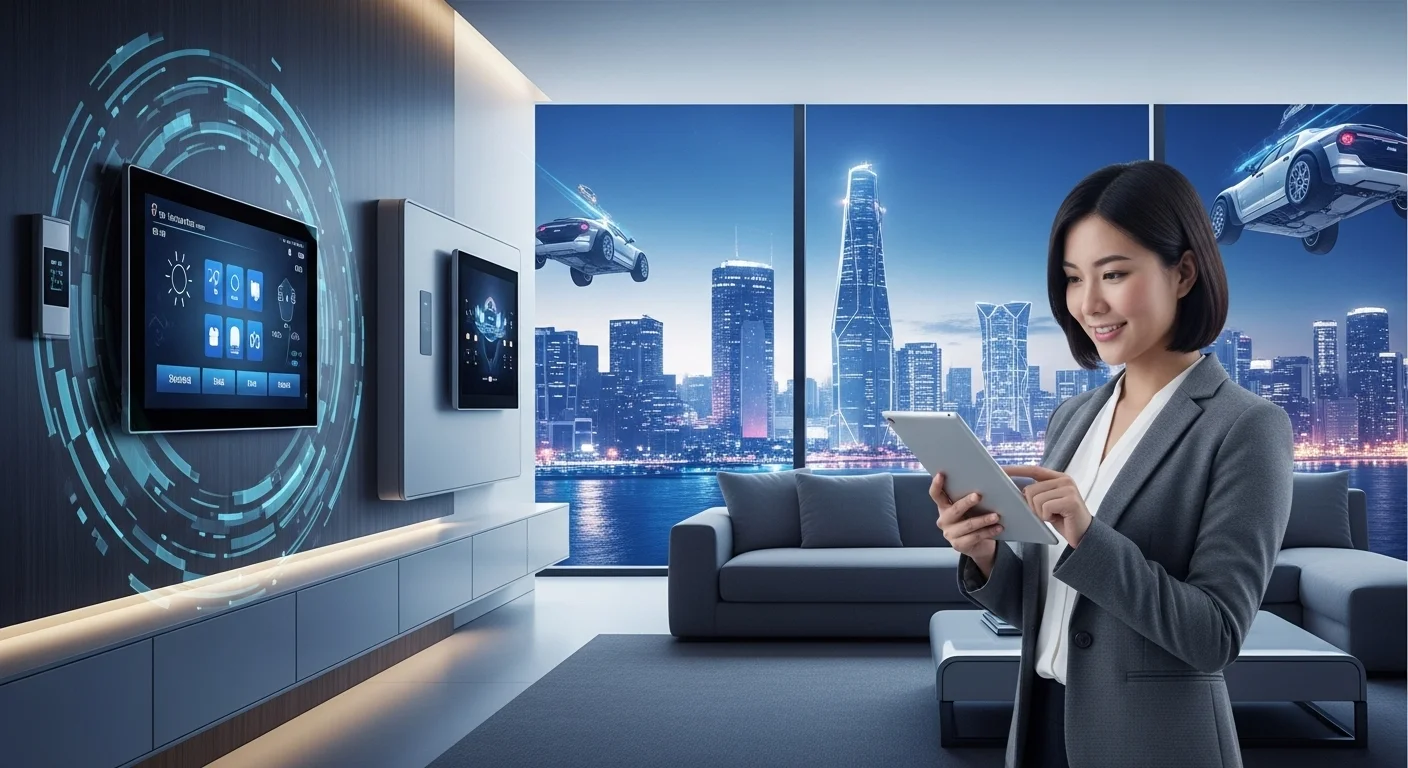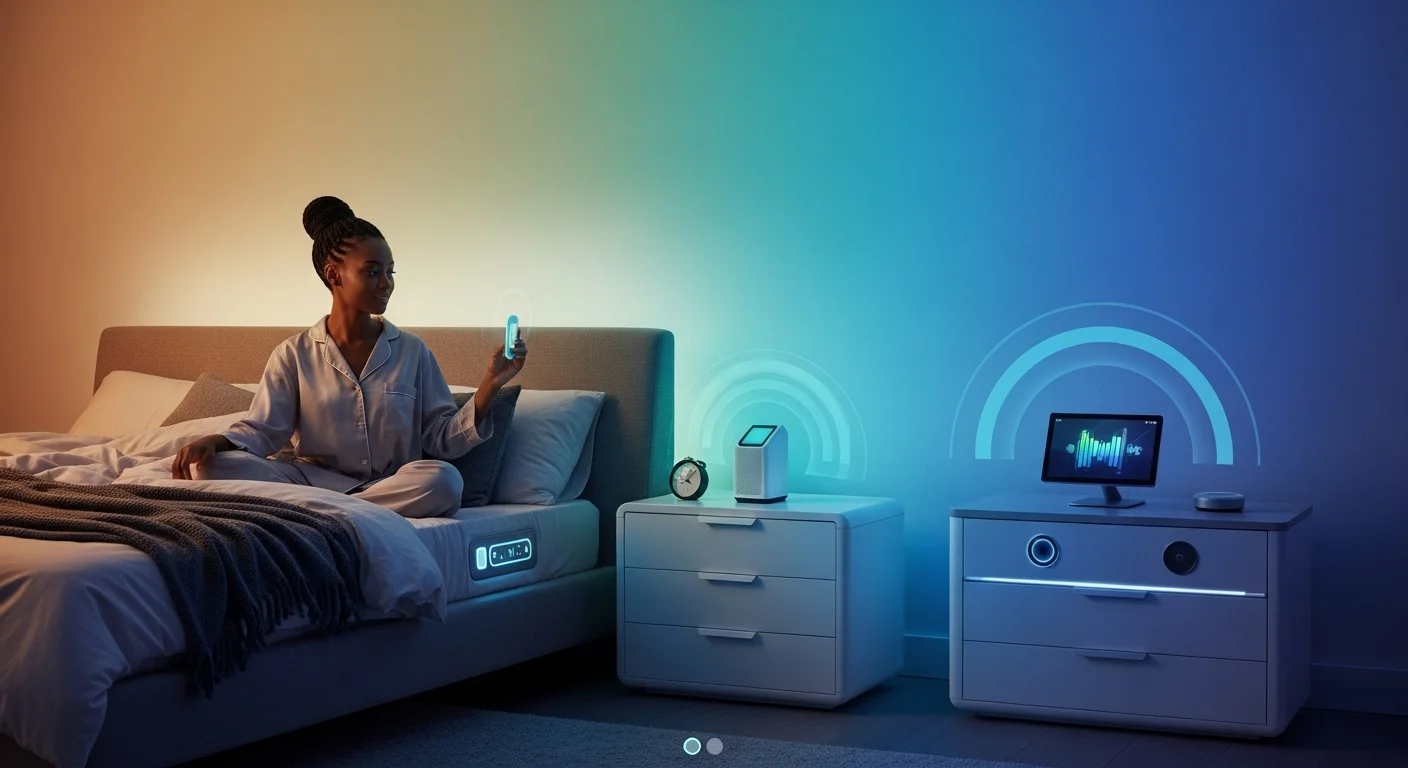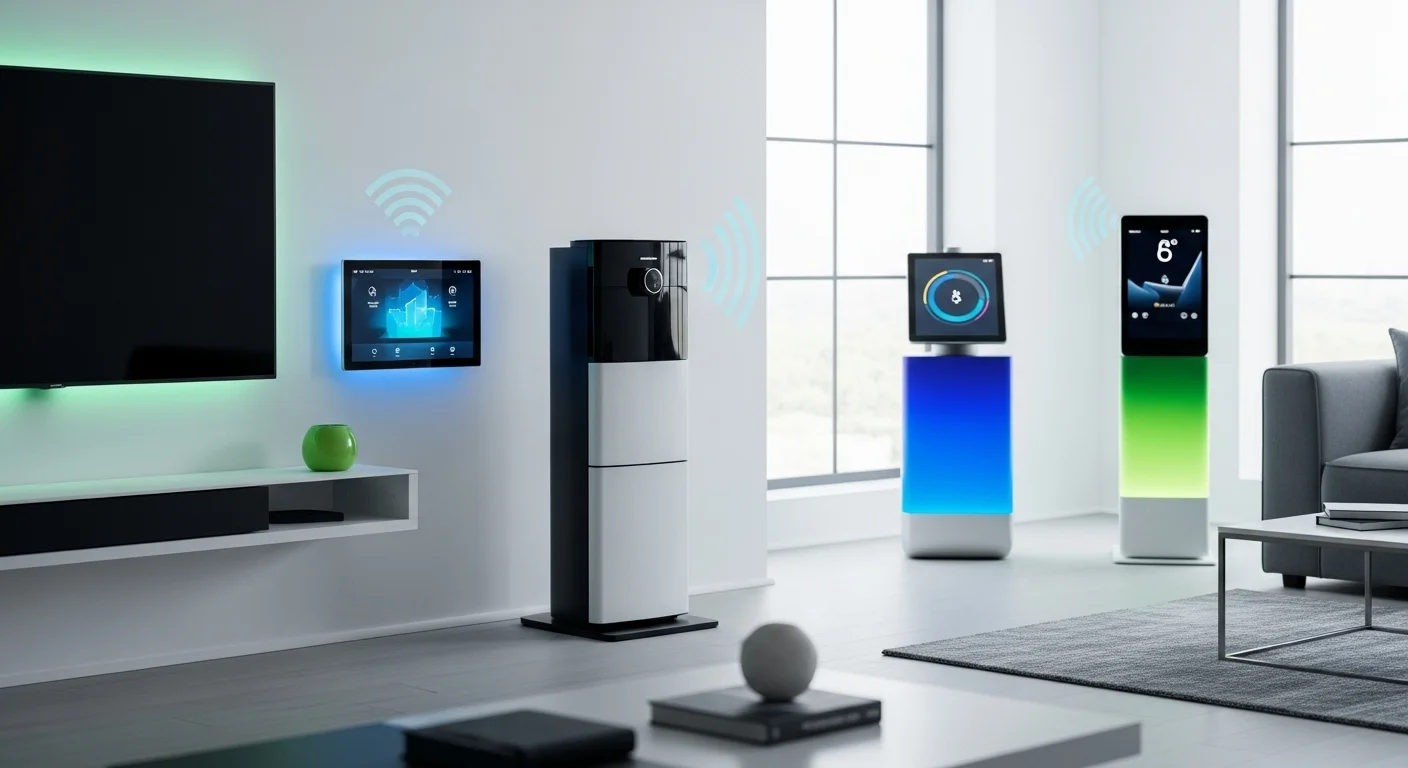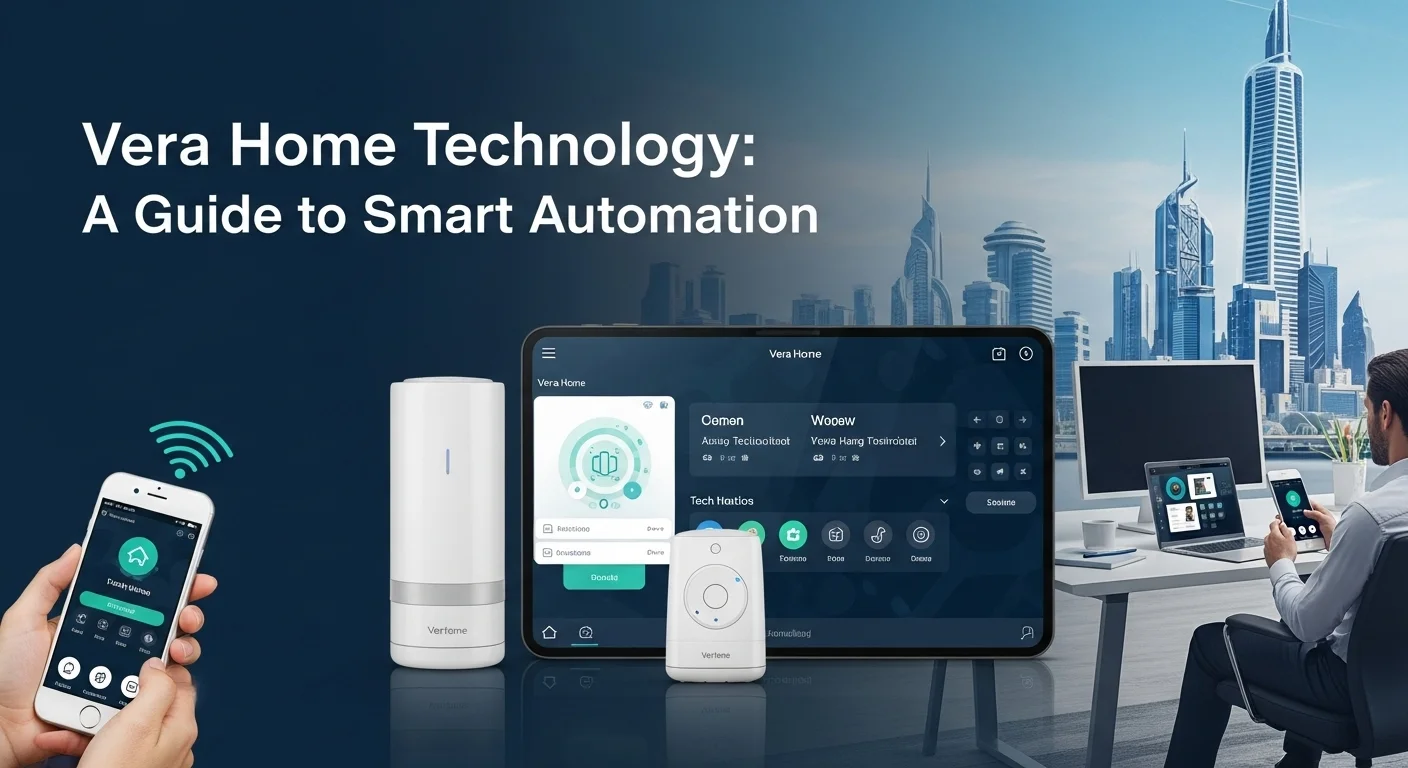The Truth About Smart Homes: A Veteran Integrator’s Guide to Home Automation

Executive Summary
For over a decade, I've been wiring up homes to think for themselves. I’ve learned that home automation isn't just about cool gadgets you control from your phone; it's about creating a living space that genuinely makes your life simpler, safer, and more enjoyable. In this guide, I'll walk you through everything I've learned on the job. We’ll cover what makes a smart home 'smart', look at the powerful custom systems like RTI that create those seamless experiences, and even touch on the industrial-grade PLC hardware we use for rock-solid reliability in the most luxurious properties. Whether you're a DIY enthusiast eager to learn or a business leader looking to innovate, I'll share the insights you actually need to understand this technology.
Table of Contents
Table of Contents
- What is Home Automation and Why Does It Matter?
- From Simple Timers to Smart Ecosystems
- The Core Parts of a Modern Smart Home
- The World of High-End, Custom Automation
- PLC: The Industrial Powerhouse in Your Home
What is Home Automation and Why Does It Matter?
Let's cut through the jargon. At its heart, home automation is about making your home's features and appliances work for you, automatically. It’s the technology that lets you control everything from your lights to your thermostat from a single app, whether you're on the couch or across the globe. But I’ve learned it's so much more than a fancy remote control. It’s about creating an intelligent ecosystem where devices talk to each other, learn your routines, and start to anticipate your needs. For the tech world, this is a huge deal. It’s where the 'Internet of Things' (IoT) gets real and personal. All that complex tech—AI, cloud computing, network security—comes together right in our living rooms. This has created a massive opportunity for businesses, from device makers to installers like me. For you, the enthusiast, it’s a peek into a future where technology just works, quietly making your life better in the background.
From Simple Timers to Smart Ecosystems
I've seen this field evolve dramatically. My first taste of automation was with those old mechanical timers you'd plug a lamp into. Then came X10 in the '70s, which sent signals over your house's power lines. It was groundbreaking but, honestly, a bit clunky and unreliable. The real game-changer was the internet, Wi-Fi, and Bluetooth. Suddenly, devices could talk to each other without being physically tethered. Now, we have specific languages for smart homes like Zigbee and Z-Wave, which create super-reliable 'mesh' networks where devices help each other pass messages along. The latest buzz is about 'Matter,' a new standard backed by the big guys—Apple, Google, Amazon—that promises to finally get all our different branded gadgets speaking the same language. This whole journey shows a clear trend: moving toward systems that are easy to use and just work together. The goal isn't just to connect a lightbulb; it's to create seamless 'scenes.' For example, I love programming a 'Movie Night' scene for clients that, with one tap, dims the lights, lowers the shades, and turns on the TV and sound system. That’s when you truly start to automate your home, not just control it.
The Core Parts of a Modern Smart Home
Every smart home, from a simple apartment setup to a sprawling estate, is built on a few key ingredients. First, you have the 'brain' or controller. This hub is what directs traffic, telling all your devices what to do. It could be a physical box like a SmartThings Hub or a software-based one like Amazon's Alexa or Google Assistant. Second, you have the sensors—the system's eyes and ears. They detect motion, temperature, light, or if a door is open. This is what makes automation smart. A motion sensor doesn't just turn on a light; it provides the context for the system to act on its own. Third, you have the actuators, which are the devices that do the work: smart bulbs, locks, thermostats, and speakers. The final, and in my experience, most critical piece is the network. Your Wi-Fi is the highway all this information travels on. A weak or unreliable network is the number one cause of frustration I see. For truly high-end home automation projects, we often install business-grade networking gear just to ensure everything runs smoothly, 24/7.
The World of High-End, Custom Automation
While you can get great DIY gear from brands like Philips Hue or Ring, there’s a whole other level to this: professionally installed, high-end home automation. This is the world of Crestron, Control4, and one of my personal favorites, RTI (Remote Technologies Incorporated). These aren't off-the-shelf products. These are bespoke systems designed by certified integrators who work with you, your architect, and your designer to build a completely tailored experience. We're talking about controlling everything—lighting, climate, multi-room audio and video, security, pools, you name it—from one beautifully simple interface. A perfect example is home theater automation. I've set up systems where a single 'Play Movie' button dims the lights to a soft glow, lowers a hidden screen from the ceiling, fires up the projector, and sets the surround sound perfectly. This seamless integration is what luxury automation is all about. It’s not about remote control; it’s about creating an environment that responds to you effortlessly.
PLC: The Industrial Powerhouse in Your Home
Now for a bit of an insider secret: sometimes, for the most critical jobs, we turn to technology from the world of industrial factories. It's called a Programmable Logic Controller, or PLC. Using a PLC for home automation is like putting a commercial-grade engine in a luxury car. These things are designed to run complex machinery in harsh environments, 24/7, without fail. In a home, we use them for the absolute essentials: lighting, HVAC, and motorized gates. The biggest benefit of a PLC is its bulletproof reliability. It’s hard-wired and doesn't depend on Wi-Fi or some company's cloud server, so it's immune to the outages that can plague consumer-grade systems. For a large property where reliability is everything, a PLC is unbeatable. The trade-off is that it requires specialized programming and is more expensive. In many of my most ambitious high-end home automation projects, we use a hybrid approach. We’ll have a PLC running the home's core infrastructure like a tank, with a beautiful RTI home automation system providing the sophisticated, user-friendly control on top. It’s the best of both worlds: industrial reliability meets elegant design.

The Integrator's Playbook: A Complete Guide to Home Automation Tech and Business
Going beyond the basics of home automation reveals a fascinating landscape of different technologies, communication methods, and business opportunities. For anyone in tech or business, this isn't just about cool home features; it's about seeing where the market is headed. This guide is my playbook, sharing what I've learned about the technical nuts and bolts and how they translate into real-world business solutions. From the sheer reliability of a PLC system to the custom-tailored user experience of RTI, understanding the options is key to making smart decisions. The ability to truly automate home living is changing what people expect and creating brand new avenues for businesses to deliver value.
Technical Methods and Communication Protocols
The real magic of a smart home is how all the devices talk to each other. Here's a quick rundown of the main languages they use, from my perspective in the field.
Wi-Fi: It's everywhere, which is great. I use it for devices that need a lot of bandwidth, like security cameras. The downside? It's power-hungry, and if you put too many smart gadgets on your regular home Wi-Fi, it can slow everything down.
Bluetooth & BLE: Perfect for one-to-one connections over short distances, like your phone unlocking your front door. The Low Energy (BLE) version is fantastic for small, battery-powered sensors that just need to send a little blip of data now and then.
Zigbee & Z-Wave: These are the workhorses of home automation. They use very little power and create a 'mesh network'—meaning your powered devices (like light switches) act as signal repeaters, making the whole network stronger and more reliable. I've found Z-Wave to be incredibly consistent because of its strict certification, while Zigbee offers more flexibility.
Matter: This is the new kid on the block, and we're all very excited about it. It’s designed to be a universal translator that lets devices from different brands finally work together seamlessly. For you, it means less worrying about whether that new smart plug will work with your Google Home or Apple HomeKit.
Wired Solutions: For my high-end home automation jobs, wires are still king for reliability. Systems like KNX, or a centrally-wired PLC for home automation, are immune to wireless dropouts. They provide a rock-solid foundation that I trust for a home's most critical functions.
Business Solutions and Market Applications
Home automation is shaking up entire industries. It’s been fascinating to be a part of it and see the new opportunities it creates.
Real Estate & Property Development: A smart home is no longer a gimmick; it's a selling point. I work with developers who now include a basic package (thermostat, lights, lock) as standard. In luxury builds, a fully integrated system using something like RTI home automation becomes a centerpiece of the home's value.
Hospitality: Hotels use this tech to create 'wow' moments and save money. A room can welcome a guest by opening the curtains and setting the temperature. Guests can control everything from a tablet. Behind the scenes, the hotel saves a fortune on energy by ensuring empty rooms aren't being heated or cooled.
Healthcare & Assisted Living: This is where the technology becomes truly life-changing. I've installed systems that help people with mobility issues control their environment with their voice. Sensors can detect if an elderly parent has a fall and automatically alert family. It's about providing independence and peace of mind.
The Integration Business: This is my world. A whole industry of professionals exists to design, install, and program these complex systems, especially for ambitious projects like a dedicated home theater automation setup. We're the bridge between powerful technology and a simple, enjoyable user experience, working with everything from a rugged PLC to a sleek RTI interface.
Comparing the Approaches: DIY vs. Professional Integration
When you want to automate your home, you face a big choice: do it yourself or hire a pro? I help people make this decision all the time.
The DIY Approach:
The Good: It’s cheaper to start, you can tinker and experiment, and it’s a fantastic learning experience.
The Bad: It can easily become a frustrating mess of incompatible devices and different apps. You are your own tech support, which can eat up a lot of time.
My Advice: Perfect for renters, tech hobbyists, or if you want to start with just one room or one function, like lighting.
Professional Integration:
The Good: You get a seamless, reliable system designed by an expert. One simple interface controls everything. You get access to pro-grade gear and have one number to call for support.
The Bad: It's a significant financial investment, and you're less free to make changes on your own.
My Advice: The right choice for larger homes, complex projects (like integrating security, AV, and climate), or for anyone who values their time and wants something that just works, flawlessly. This is the world of home theater automation and whole-home control.
Deep Dive: RTI and PLC in Modern Systems
To really get the difference, let me break down two very different but equally important technologies I use regularly.
RTI (Remote Technologies Incorporated): Think of RTI home automation as the ultimate custom dashboard for your home. Its power is in the user experience. With its programming software, I can create a completely unique interface for a client on a touch panel or an iPad. It's an art form. RTI is the conductor of the orchestra—it doesn’t play the instruments itself, but it tells all the other systems (lighting, audio, security) exactly what to do and when. For a high-end home theater, an RTI remote is what makes the magic happen with one touch.
PLC (Programmable Logic Controller): Deciding to use a PLC for home automation is a decision for pure, unadulterated reliability. It’s for when 'glitchy' isn't an option. The PLC is a rugged, hard-wired box that I program to handle the home's most essential functions. It doesn't care if the internet is down; it will execute its commands perfectly every time. Often, the ultimate setup is a hybrid: the PLC is the unbreakable engine doing the heavy lifting in the background, while the elegant RTI system provides the beautiful and intuitive controls for the homeowner. This is the pinnacle of high-end home automation—marrying industrial strength with a five-star user experience.

My Pro Tips: Strategies to Get Home Automation Right
Getting into home automation can feel like navigating a minefield. As someone who does this for a living, I've seen the common pitfalls and the secrets to success. Whether you're a DIYer building your dream setup or a business looking to use this tech, this is my advice for getting it right. By focusing on a solid plan, tight security, and a bit of forethought, you can build a system that’s not just cool, but genuinely reliable and useful for years to come. This is how you master everything from a simple smart setup to complex integrations with RTI home automation or a PLC.
1. Plan Before You Pay: My Golden Rule
The biggest mistake I see is people buying a pile of cool gadgets with no master plan. It almost always ends in frustration, with a dozen different apps on your phone. A great smart home starts with a blueprint, not a shopping cart.
Define Your 'Why': What problem are you trying to solve? Are you chasing convenience (voice-controlled lights), energy savings (a smart thermostat), peace of mind (security cameras), or pure entertainment (a killer home theater automation setup)? Pick one or two priorities to start with. You don't have to automate your entire home at once. Nail the lighting first, then move on.
Think About People, Not Just Tech: Who lives here? A system that’s perfect for a tech geek will be a nightmare for kids or elderly parents. For families, I find that simple voice commands and physical keypads are far more practical than forcing everyone to use a smartphone app.
Check Your Foundation—The Network: Your Wi-Fi is the foundation of your smart home. If it's weak, your home will feel 'dumb.' Before buying anything, walk around your house with your phone. Do you have a strong signal everywhere you plan to put a smart device? If not, the best investment you can make is a modern mesh Wi-Fi system. For my high-end jobs, we always run Ethernet cables to key locations. It’s old-school, but it's unbeatable.
2. Choose Your Team: Picking an Ecosystem
The smart home world is built around a few big 'teams' or ecosystems. Your choice here will define how you interact with your home and what products you can buy.
Amazon Alexa: This is the team with the most players. Alexa works with a massive number of devices. It's incredibly flexible and my go-to recommendation for people who want the widest possible choice of gadgets.
Google Home/Assistant: Google's strength is its brain. It's better at understanding natural, conversational language. Its deep integration with services like Google Calendar makes it incredibly useful for organizing a busy household.
Apple HomeKit: This is the Fort Knox of smart homes. Apple is ruthless about security and privacy. The selection of compatible devices is smaller, but they are all vetted to be highly reliable and secure. For Apple users, the seamless experience across iPhone, iPad, and Apple Watch is fantastic.
The Power-User Option (Hubitat/Home Assistant): For my fellow tech nerds, platforms like Hubitat or Home Assistant offer total control. They run locally in your home, not in the cloud, so your automations work even if the internet goes out. They're not for beginners, but you can't beat their power and customizability.
3. Lock It Down: Security is Non-Negotiable
Every smart device you add to your network is another potential door into your digital life. I've seen the fallout from poorly secured systems, and it's not pretty. Securing your smart home isn't an extra step; it's step one.
Secure Your Router: Start here. Give your Wi-Fi a strong, unique password and use WPA3 encryption if you can. Crucially, change the default admin password on the router itself.
Use the 'Guest Network' Trick: This is a simple but powerful tip. Put all your smart home gadgets on your router's guest network. This creates a digital wall between them and your personal computers and files. If a hacker compromises your smart toaster, they won't be able to access your sensitive data.
Good Password Habits are a Must: Use a different, complex password for every single smart device account. A password manager is your best friend here. And please, turn on two-factor authentication (2FA) wherever it's offered.
Know Where Your Data Goes: Be conscious of what data your devices collect, especially those with mics and cameras. Reputable brands are usually transparent, but it's worth reading the privacy policy. It’s one reason clients sometimes prefer a closed professional system like RTI home automation or a locally-run PLC, which can be configured to keep data inside the home.
4. Blending Systems: The Hybrid Approach
For the ultimate smart home experience, you often need to blend different types of systems. This is where you can get the best of all worlds.
Mix and Match: You don't have to be a purist. I often design systems that use Google Assistant for easy voice control of lights, while a dedicated RTI home automation system handles the complex logic for the home theater. The trick is making sure the systems can talk to each other. A good high-end system will have drivers to integrate with the mainstream voice assistants.
When to Bring in the Heavy Artillery (PLC): I recommend a PLC for the functions in your home that absolutely, positively have to work every time—no excuses. Think critical lighting paths, security gates, or your primary heating and cooling. You might use a fancy app to trigger a 'Vacation' mode, but the signal that reliably shuts everything down can be sent to an industrial-grade PLC. It’s the best of both worlds: industrial reliability meets elegant design.
Expert Reviews & Testimonials
Sarah Johnson, Business Owner ⭐⭐⭐
This was a solid overview of home automation. As a business owner, I'd have loved a few more real-world case studies, but the information is accurate and well-presented.
Mike Chen, IT Consultant ⭐⭐⭐⭐
A really helpful article on Home Automation. It clarified a lot for me as an IT consultant, though a couple of the more technical concepts could be broken down even further for clarity.
Emma Davis, Tech Expert ⭐⭐⭐⭐⭐
Fantastic guide! It's incredibly thorough and was a huge help for my specialization. Everything was explained perfectly and was easy to follow. Highly recommended.



